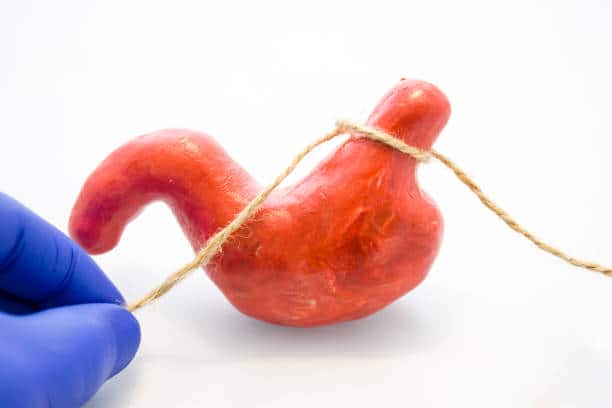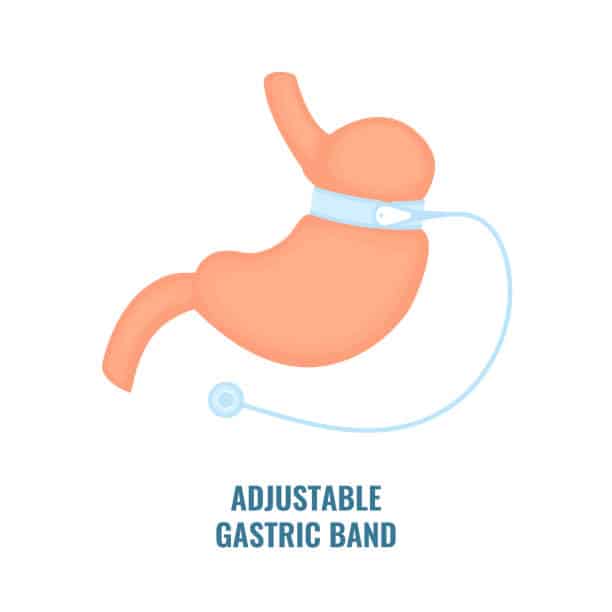Lap Band Surgery Cost, Indications and Technique
Overview
Obesity results from a mix of genetics, environmental influences, and behavioral factors. This condition is caused by a combination of high-calorie foods, eating too much food, and leading a sedentary lifestyle.
Diabetes mellitus, hypertension, dyslipidemia, arthritis, sleep apnea, cholelithiasis, cardiovascular disease, and cancer are all linked to obesity. Being overweight affects more than 100 million adult Americans.
Obesity, after smoking, is the second-leading cause of preventable death in the United States. Each year, 400,000 people die unexpectedly as a result of obesity-related disorders.
Operations that are designed to cause significant and long-lasting weight loss in patients who are severely obese, like laparoscopic gastric banding, are kinds of bariatric surgery.
Bariatric surgery helps patients achieve weight loss through two mechanisms: restriction and malabsorption.
Laparoscopic gastric banding falls under the subcategory of restrictive bariatric surgery.
What is Lap Band Surgery?

Lap Band Surgery
Lap band surgery is a surgical technique in which a laparoscope is used to insert an adjustable belt around the top region of the stomach. The band is constructed of silicone, and it can be tightened by filling it with saline.
The band is attached to a port that is buried beneath the abdomen’s skin. This port allows you to add or remove saline from the band.
The stomach’s size and the amount of food it can hold are ultimately limited by the lap band.
Indications of Lap Band Surgery
The main indication of this surgery is morbid obesity with the patient should meet the following criteria:
- A Body mass index of 40 or greater, or a BMI of 35 or higher with at least one obesity-associated comorbid condition. High blood pressure, diabetes, and severely restricting musculoskeletal problems are examples of these conditions.
- Nonsurgical weight loss measures that failed.
- Mental health clearance is required without the use of alcohol or illegal substances.
- There are no medical reasons why surgery should not be performed.
- The proper threshold for bariatric surgery is a point of contention. The following are the recommendations made by the National Institute of Health: Patients with a BMI greater than 40 kg/m2 who have tried and failed to lose weight with diet, exercise, and medication can be considered.
Contraindications of Lap Band Surgery
- The following are the issues that interfere with this surgery:
- Patients unable to tolerate general anesthesia
- Those with uncontrollable coagulopathy
- Those at a prohibitive operative risk
- Prader-Willi syndrome,
- Malignant hyperphagia,
- Untreated severe psychiatric illness,
- Pregnancy
- Cirrhotic with portal hypertension
- Autoimmune connective tissue disorders
- Chronic inflammatory conditions
- The need for chronic corticosteroid use.
How Lap Band Surgery is Performed?

Lap Band Surgery
The surgery is done while you are positioned in the Trendelenburg position and under the effect of general anesthesia.
Abdominal Entrance and Portal Placement
The surgeon is in the middle of the patient’s legs, while the assistant is on the left side of the patient. Veress needle insufflation is used to gain access to the abdomen.
An assisted camera port is established in the left subcostal margin at the midclavicular line. The remaining ports are exposed to direct view.
The surgeon operating ports were placed in the left and right mid-abdomen in the bilateral midclavicular lines. In the subxiphoid position, a liver retractor is used. After that, the patient is positioned in a reverse Trendelenburg posture.
Assessment of Hiatal Hernia
Rural defects and hiatal hernia should be corrected before laparoscopic adaptable gastric lap band surgery. Such abnormalities may not be visible intraoperatively or diagnosed prior to surgery.
Placing an orogastric calibration tube in the stomach and inflating the balloon with air or water is one technique to test for them. A crura repair should be performed if the balloon moves up into the chest past the gastroesophageal junction. Small non-sliding hernias can be repaired using anterior crura procedures.
Placement of Gastric Band
the surgeon will use the appropriate band size and brand. By aspirating the device’s balloon port, the lap band balloon is totally deflated on the back table.
Through the posterior esophagogastric tunnel, the band or suture loop is pulled. The gastric band is then tightened anteriorly and its stomach mobility is assessed.
Gastro-gastric Plication
The distal fundus of the stomach is sutured to the superiorly situated gastric pouch with permanent sutures. These sutures form a protective tunnel for the band’s anterior, left-lateral side.
Access Portal Placement
The lateral port is used to grip the free end of the gastric band tubing and remove it. With the removal of pneumoperitoneum, all ports, equipment, and retractors are removed from the abdomen.
Close the wounds
Subcuticular absorbable sutures are used to close all wounds. Dressings that are sterile are used.
Risks of Lap Band Surgery
Of all the bariatric surgeries, laparoscopic adjusted gastric banding has the least death rate, with the following complications:
Deep vein thrombosis. In several studies, pulmonary embolism is the major cause of death after laparoscopic adjustable gastric band surgery. Prophylaxis for venous thromboembolism should be given to these individuals.
Esophageal or gastric perforation. It’s frequently linked to an undiagnosed hiatal hernia. The process should be stopped if a perforation occurs near the area where the band will be inserted.
Esophagogastric obstruction. Due to the increased diameter of succeeding band designs, it is rarely seen. It is possible to avoid this by eliminating the peri-gastric fat pads to make room for the gastric band.
Cost of Lap Band Surgery
The cost of lap band surgery ranges from $9,000 to $18,000, with an average cost of roughly $14,000.
The broad range is attributable to a number of factors, including the doctor you choose, your coverage, where you reside, and any problems that follow.
See Also
Who is Candidate for Mini Tummy Tuck
What to Expect After Breast Implant Removal
References
https://emedicine.medscape.com/

Dr.Sharif Samir Alijla, is a general medical doctor and a well-rounded professional that cares and treats patients from Palestine. I participated in many medical studies and conferences, I've launched a range of community initiatives and taken part in a variety of leadership and change training programs. I worked as an author for many medical websites such as TebFact . I specialized in writing medical articles from authoritative and updated sources in a simple and smooth the way for the reader.



